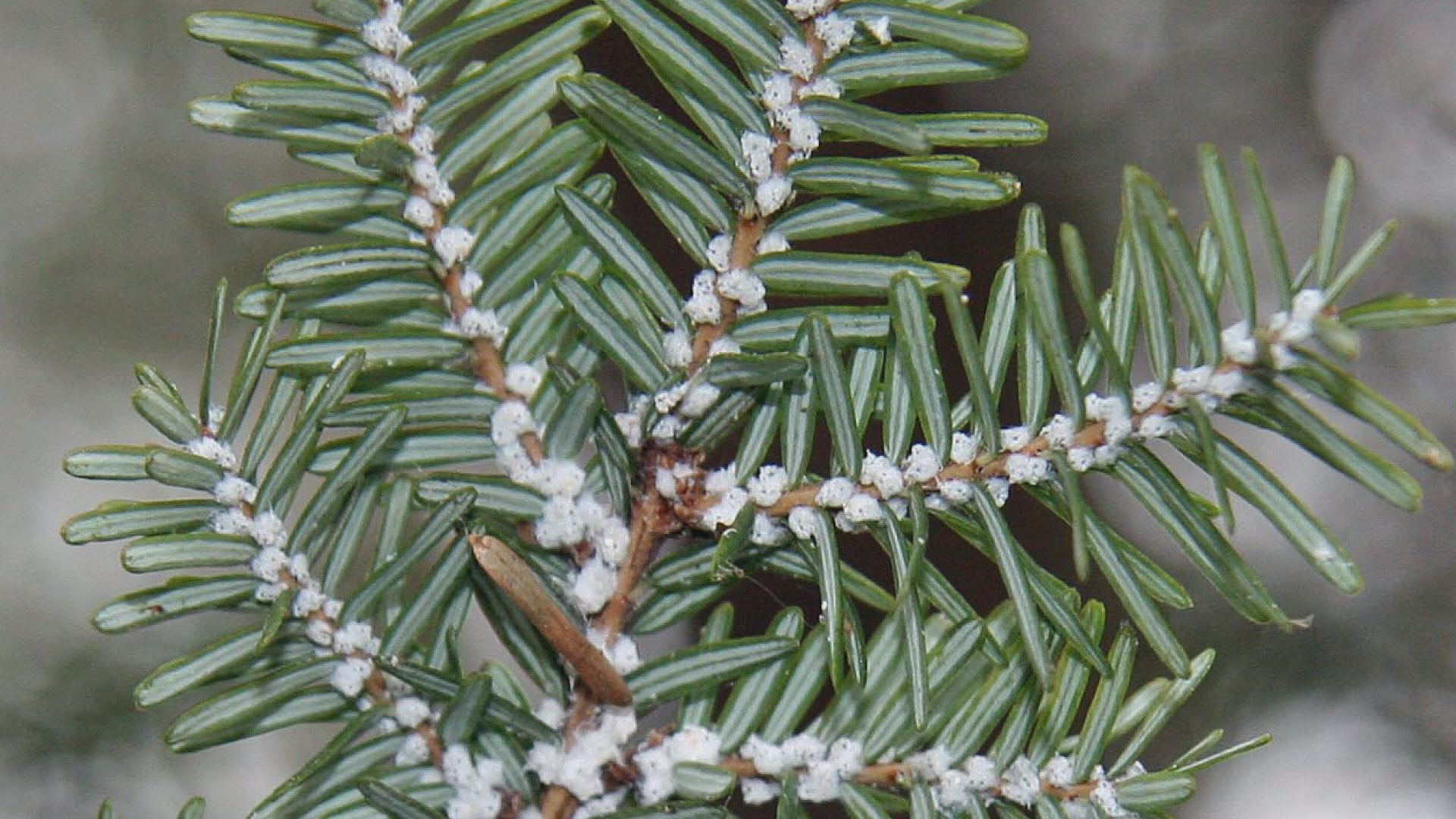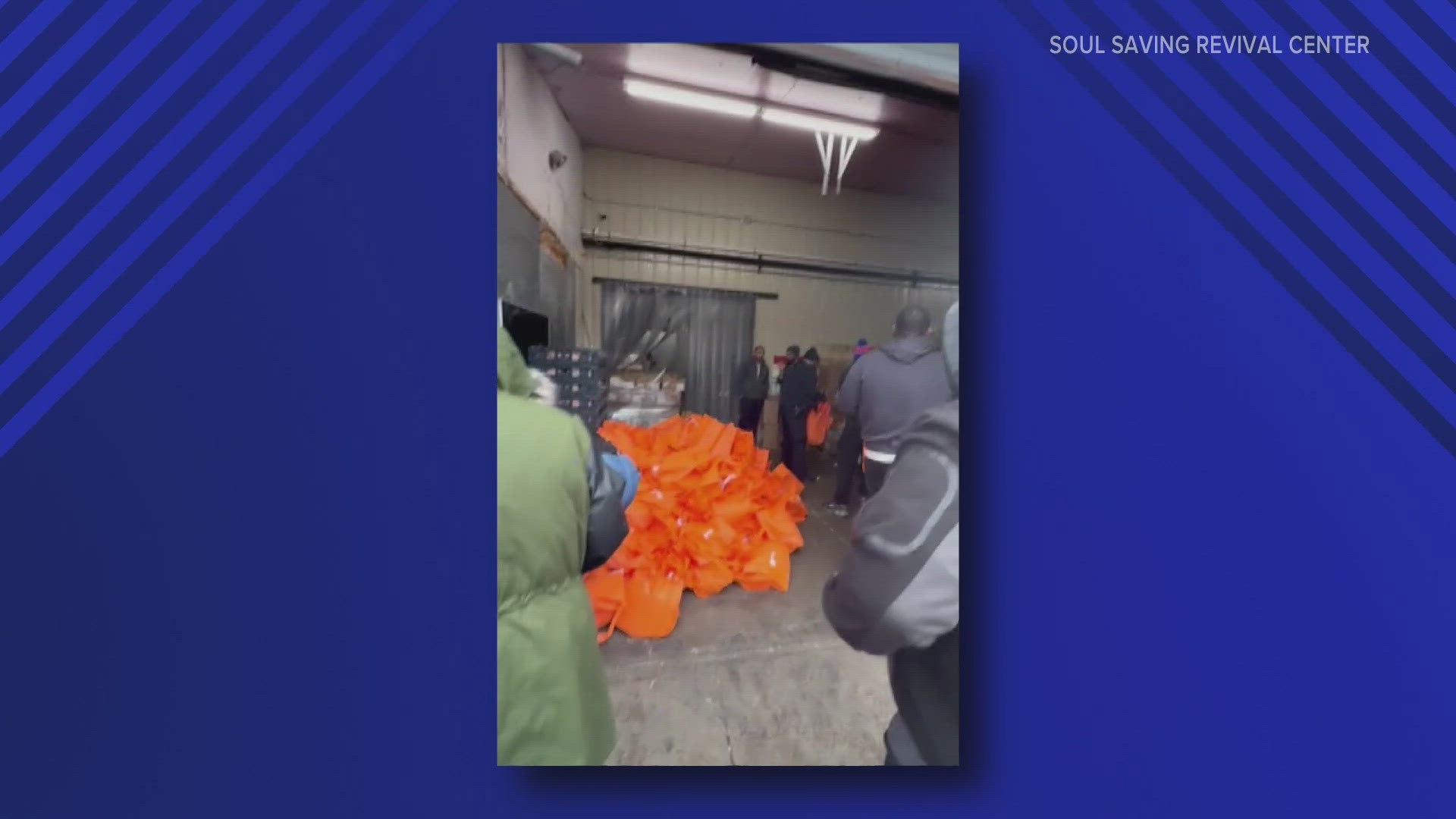" We could look within ten years, twenty years, at the loss of a very large portion of the Hemlocks in this area."
It may seem like the ecological equivalent of a broken record...yet another invasive species plaguing the region. Non-Native invaders are spreading everywhere and take on many forms. A relatively recent and unwanted addition to the landscape is the Hemlock Wooly Adelgid, a seemingly innocuous tiny insect that could have devastating results on Hemlock trees throughout the region.Mark Whitmore of Cornell University has been studying this invasive closely. " To the environment it's very important. It's basically the only Conifer we really have in the lowland forests, in the gorges. It's critical for winter time habitat for many animal species, migratory birds."
During this time of year, the insects are hidden beneath a white cottony mass, and are busy laying eggs. The eggs hatch in the fall and the newborn bugs begin to feed on the tree, continuing into the winter.The Adelgid begins to act on the tree by injecting it with a hormone ," says Whitmore " Which eventually leads to a kind of arboreal suicide. " What the tree does is perceive that there's a generic wound there, and that wound then is walled off by the tree. So when you take alook at an infested twig, you'll see that the Adelgids are all over that twig, and the tree itself is walling off those individual wounds, it's actually clogging up it's own transport system to get water and nutrients to the needles and buds, and so it basically strangles itself."
As with any invasive species, the lack of natural predators means that the attackers will have free reign to wreak havoc. " The potential for the Hemlock Wooly Adelgid is huge," Whitmore explains" Because we really have no indication that there is any wide spread resistance to this."
That's why biologists are lending a helping hand. In WNY, a predatory beetle, Laricobius Nigrinus, or " Larry " in short, has been released throughout NY . Whitmore says the tiny insect feeds exclusively on the Hemlock Wooly Adelgid. " Larry has been established at a few of the sites I've released at, and I'm looking at some of the other sites to see if thay are established. It's very difficult at the early stages of biological control to find and record actual establishment. Usually the tumb's rule is at least two or three years if not more, so I'm hopeful."
There is an insecticide that is also both inexpensive and effective, so the long term prognosis is at least somewhat optimistic as opposed to other damaging invaders. Whitmore acknowledges that public education and support is also an important weapon in this war. " We've got to develop a constituency to make politicians aware that this is an important avenue of research to continue to invest in, so that we can slow down the rate and minimize the possibility of getting another Emerald Ash Borer. We've really got to be smart about this, or we could lose a substantial number of Hemlocks, and you know the old saying, you don't know what you've got until it's gone."


